December 11, 2016
Recently Vincent participated in trials with napier grass. Lamsan Group, a large corn miller, wanted to determine if this plant material could be used as boiler fuel by Lamsan Power, their renewable power generation business. The testing was organized by Christopher Lu in Mindanao.
Napier and banagrass inquiries have come to Vincent from the Philippines, India, and Brazil. These grasses grow plentifully and rapidly in these countries. The studies and projects focus on their conversion to renewable biofuel.
Vincent was selected to participate because our laboratory presses have been used for university studies of napier and banagrass. Summaries are pasted at the end of this newsletter.
A concern with biofuel is that there are trace amounts of minerals, especially chlorides, in the grass. Mr. Lu wrote, “For chlorine content, we normally get between 0.1% to 0.5% Cl as received basis…”
Salts containing chlorine can contribute both to slagging and corrosion in a boiler. In the case of biofuel, it is practical to wash these minerals from the cane and then use a screw press to remove residual water. When a high concentration of chlorine containing salts is present in material entering a screw press, we switch from 304 to 316 stainless, or even Duplex 2205 to combat corrosion.
Working with napier grass, our first step after harvest was to shred the cane. The cane has a central pith like sugar cane; it is not hollow like bamboo. However the outer skin is not as tough or abrasive. The leaves were kept out of the harvested material because they contain higher levels of objectionable salts.
In our trials, a 100-hp low rpm “snag-tooth” Muffin Monster shredder supplied by JWT in California was used. We ran the cane through this shredder three times in order to get additional size reduction.
Counterflow washing has proven effective in removing the objectionable sodium, phosphate, and chlorine-containing chemicals. This is the same system used to wash sugars from pectin peel and cellulosic ethanol feedstock, as well as to concentrate solubles in cream of coconut, apple juice, and such. In the case of our testing a single wash stage, using extra water, was improvised.
Our as-harvested cane had 70% moisture (normal is 60% to 70%) and 5 Brix. Washing took the Brix down to close to zero. Pressing this napier grass gave us biofuel with moisture contents in a 46%-55% range.
The flow through the rental CP-4 lab press was steady, but slow. There was significant shedding action in the press, with no sign of screen blinding. Press liquor came out the full length of the screen.
We tried in-line washing with water and also with steam. With steam we got the grass up to 70C. This was done by injecting the fluid through the resistor teeth of the screw press. It was modestly effective.
For reference, the calorific value of napier grass on a dry basis is approximately 4500-4800 kcal/kg.
Below are summaries from two papers which have been published on this subject. It is interesting that both groups of researchers did their work using a Vincent laboratory Model CP-4 screw press.
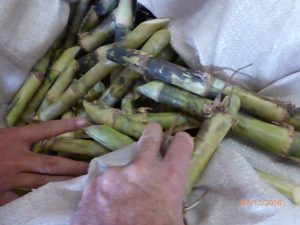
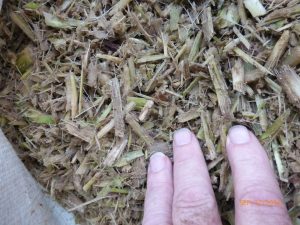
AS HARVESTED BILLETS SHREDDED
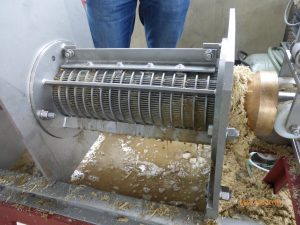
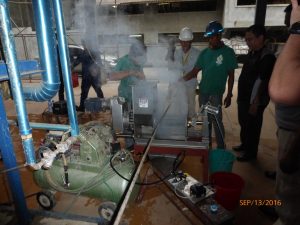
CP-4 PRESS IN ACTION STEAM INJECTION
August 23-25, 2010 — Taiyuan, Shanxi, China
BIOMASS PRETREATMENT FOR GASIFICATION
Hong Cui, Scott Q Turn, Thai Tran
Hawaii Natural Energy Institute, University of Hawaii at Manoa
1680 East-West Rd, POST 109, Honolulu, HI 96822
ABSTRACT:
Fresh biomass can be used as fuel to reduce net CO2 emissions, but may require processing to improve fuel qualities prior to use in thermal conversion facilities. Processing fresh banagrass, a fast-growing tropical plant, by mechanically removing juice and water-soluble elements using a screw press is explored. Treatments were found effective in reducing ash content including alkali and alkaline earth metals, as well as chlorine. Fuel analysis indicated that the treated banagrass had lower ash content, improved heating value, higher ash deformation temperatures, and higher volatile matter to fixed carbon ratios, than the untreated material. The elemental composition of the residual liquids from the treatment process was determined. From this preliminary analysis, the liquids appear suitable for irrigation or use as fertilizer.
end
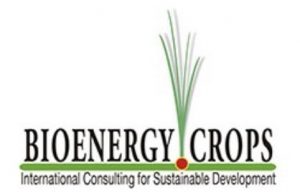
9 September 2016
PRETREATMENT OF DEDICATED ENERGY CROPS & AGRICULTURAL RESIDUE
Summary
A counter-current leaching system is recommended to extract the water-soluble elements from the biomass to upgrade the fuel. The leaching of the solubles controls the formation of alkaline compounds through substantial removal of chlorine, potassium, and calcium. Sugar cane diffusers, which are used in modern sugar mills to achieve superior extraction results, are examples of counter-current leaching systems. The liquid stream from a biomass system, saturated with the dissolved elements, can be reapplied to fields directly, or after being used in an anaerobic digester for biogas production.
Counter-current leaching, or washing, is a multi-stage process in which fresh solvent (in this case water) is introduced in the last stage of the washing series. The water is then circulated to the preceding stage, and so on to the end of the series. The cleanest product is washed with the cleanest water, while the most saturated is washed with the most saturated water.
This system of washing is extensively used in mining and food industries.
end
Issue 290
